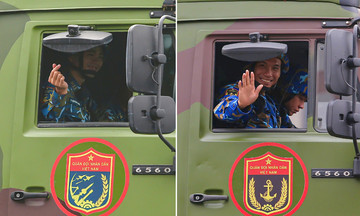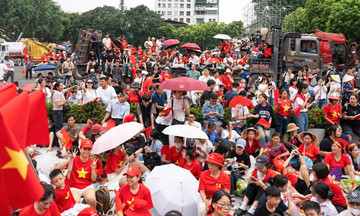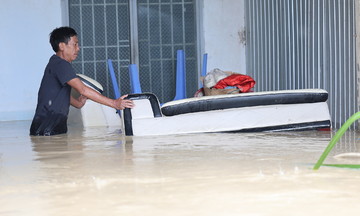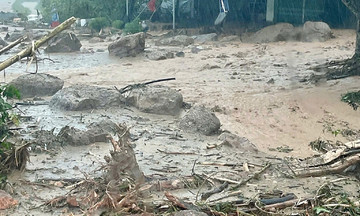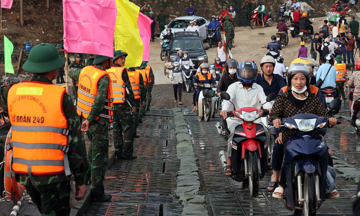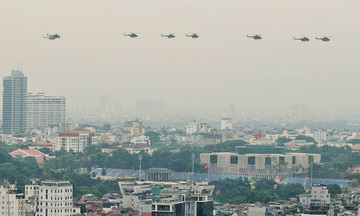The 2024 Road Traffic Safety and Order Law mandates journey monitoring devices and driver-facing cameras for commercial vehicles with 8 or more seats (excluding the driver's seat). Vehicles with fewer than 8 seats are only required to have journey monitoring devices.
In a recent draft law amending and supplementing 10 related laws, the Ministry of Public Security proposed expanding the requirement for journey monitoring devices and driver-facing cameras to all commercial vehicles. This means taxis and contract cars with fewer than 8 seats would also need to install driver-facing cameras.
The Ministry of Public Security explained that this proposal aims to enhance the management of commercial vehicles. The devices would monitor drivers for violations like using phones or electronic devices while driving, exceeding passenger limits, not wearing seatbelts, removing both hands from the steering wheel, and using feet to control the steering wheel.
The devices would also help detect public order and safety violations, such as assaults between passengers and drivers, and aid in tracing criminals transported in these vehicles.
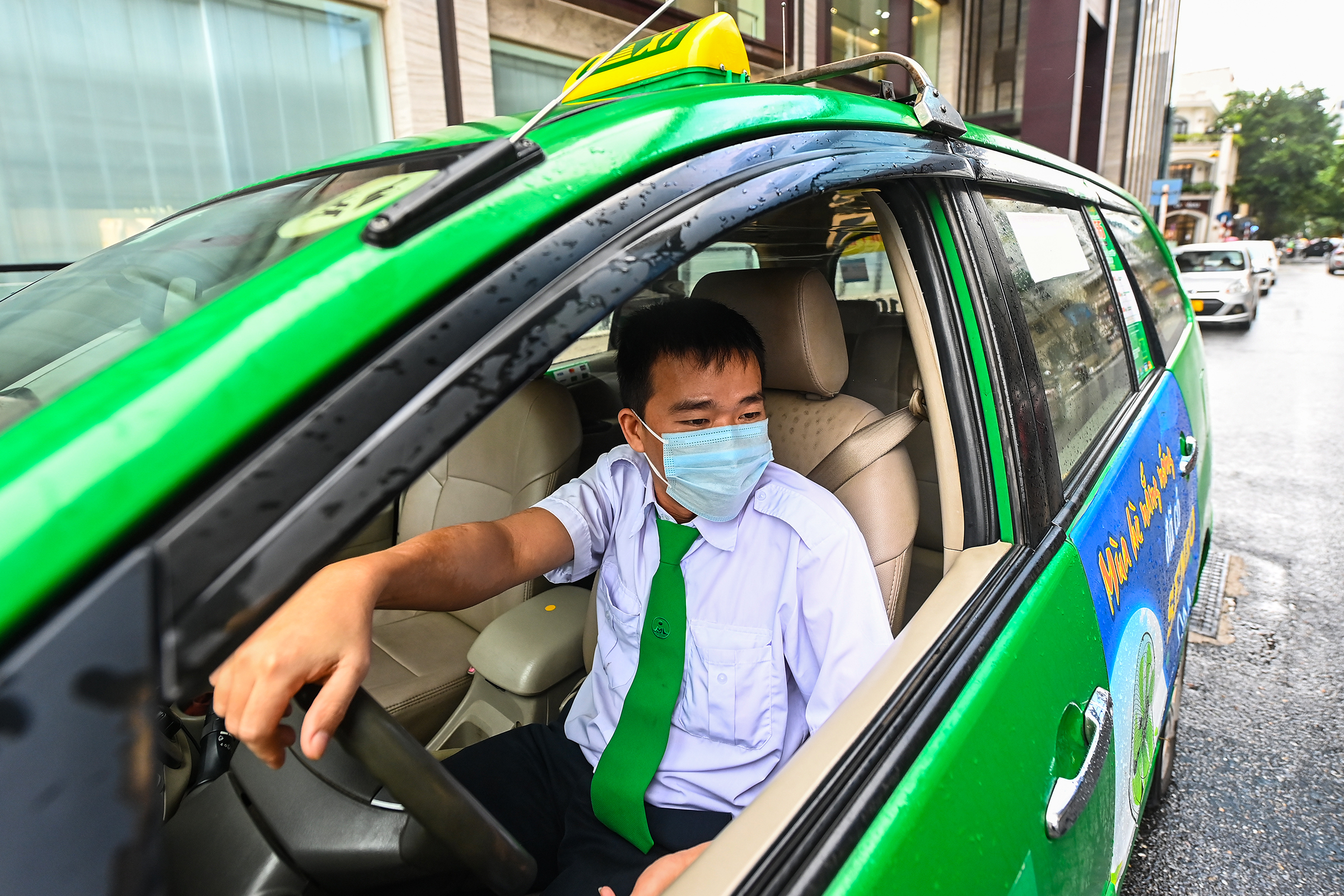 |
Drivers of taxis and ride-hailing services with fewer than 8 seats may be recorded. Photo: Giang Huy |
Drivers of taxis and ride-hailing services with fewer than 8 seats may be recorded. Photo: Giang Huy
Dr. Tran Huu Minh, Chief of Office of the National Traffic Safety Committee, cited several accidents involving commercial vehicles to illustrate the prevalence of basic traffic rule violations among drivers of passenger cars, trucks, and commercial vehicles with fewer than 8 seats. In recent years, some localities like Hanoi, Quang Binh, Dong Nai, and Lang Son have reported accidents caused by drivers falling asleep at the wheel or taxi drivers experiencing strokes.
The regulation requiring driver monitoring cameras in larger passenger cars and trucks has proven effective. Data from these cameras has revealed hundreds of violations that could have led to accidents. Therefore, expanding the installation of cameras to commercial vehicles with fewer than 8 seats is a step in the right direction. This measure aims to manage and promote safe driving behavior, provide evidence in case of incidents, and enhance overall road safety.
Several North American countries have mandated cameras in commercial vehicles, including limousines, taxis, and ride-hailing services like Uber and Lyft. Tens of thousands of taxis in New York (USA) already have surveillance cameras. New Zealand requires in-vehicle cameras for small passenger service vehicles in urban areas. The state of Victoria (Australia) mandates security cameras in commercial passenger vehicles, stipulating that cameras must clearly capture the driver and all passengers, record continuously, and store data for a specified duration.
According to Minh, given the large volume of data generated by these cameras and the advancements in AI, it's crucial to develop infrastructure and applications that enable AI-powered cameras to screen, filter, and detect violations. AI could even identify potential accident risks, such as drowsiness, extended nighttime driving, fatigue, inadequate warning before stopping, and strokes, alerting the company, driver, and authorities.
However, many experts point out some drawbacks to this regulation. Nguyen Van Quyen, President of the Vietnam Automobile Transportation Association, argues against mandating cameras in commercial passenger vehicles with fewer than 8 seats. He believes it unnecessarily increases investment costs for businesses, indirectly raising fares for passengers. Each camera costs 3-5 million VND, excluding data transmission and storage costs. With approximately 800,000-900,000 commercial vehicles under 8 seats out of a total of 1.3 million commercial vehicles nationwide, this regulation could add trillions of VND in costs, leading to unnecessary societal expenses.
Quyen notes that most taxis and ride-hailing services operate within urban areas, covering short distances under 200 km, with frequent passenger turnover, making driver drowsiness less likely. Urban roads already have surveillance cameras, so installing additional in-vehicle cameras for security and order is unnecessary.
Quyen also points out that data from journey monitoring devices and driver-facing cameras in larger passenger cars and trucks isn't being effectively utilized. Legal regulations for penalizing traffic violations based on this data are insufficient, and both types of devices lack regular inspections.
The Vietnam Automobile Transportation Association has submitted a document to the Ministry of Public Security, recommending that commercial vehicles with fewer than 8 seats only be required to install journey monitoring devices, as per current regulations.
Transportation expert Nguyen Van Thanh expresses concerns about driver-monitoring cameras also recording passengers, potentially infringing on their privacy. Leaked or online dissemination of these images could have serious consequences. Recording in a confined space might also make passengers and drivers uncomfortable, feeling constantly monitored.
Thanh suggests that for areas with frequent security issues, like assaults on drivers or vehicle theft, the police should implement decisive solutions, and companies should adopt asset and driver protection measures. If the regulation is merely "symbolic," companies might resist by installing low-quality equipment, while drivers could disable or cover cameras without regular inspections.
Before the 2024 Road Traffic Safety and Order Law was passed, Thanh says the drafting agency consulted and agreed to only mandate recording devices for commercial vehicles with 8 or more seats. In cases of public order violations, law enforcement would use investigative measures to apprehend offenders. Businesses and drivers aren't obligated to invest in equipment to provide images to law enforcement, and any additional in-vehicle devices should primarily serve road safety purposes.
Doan Loan



